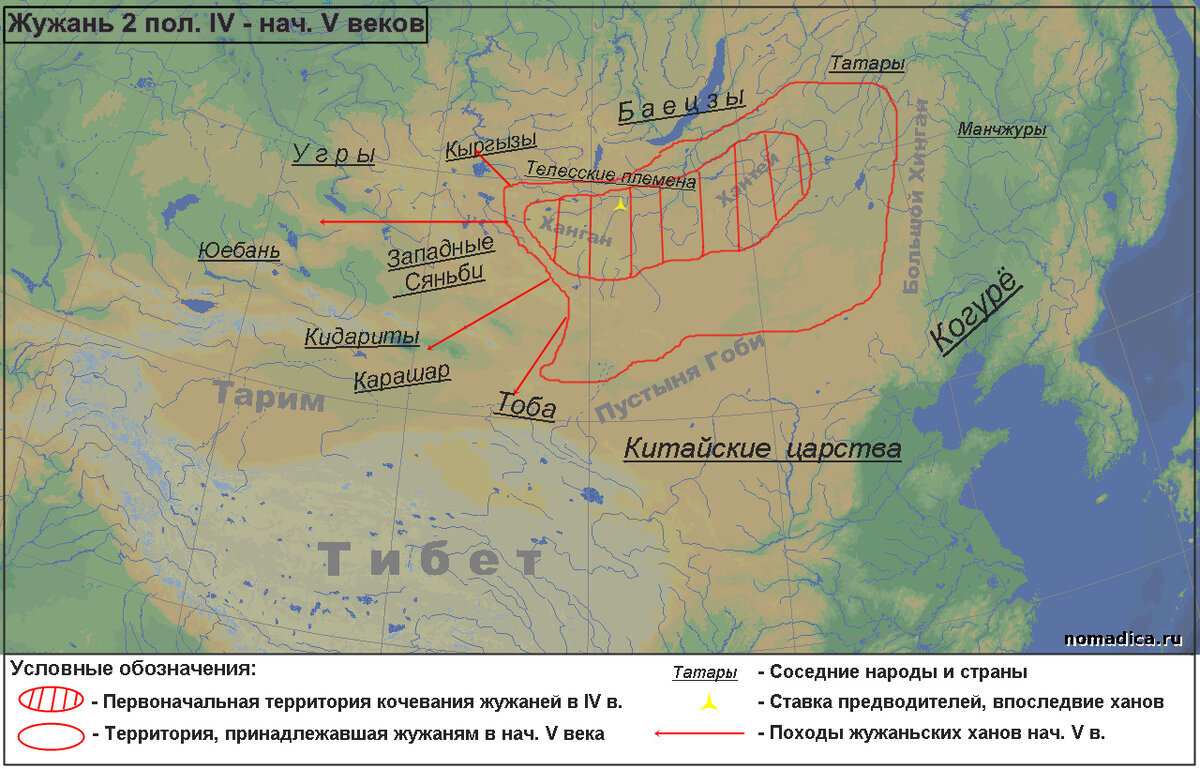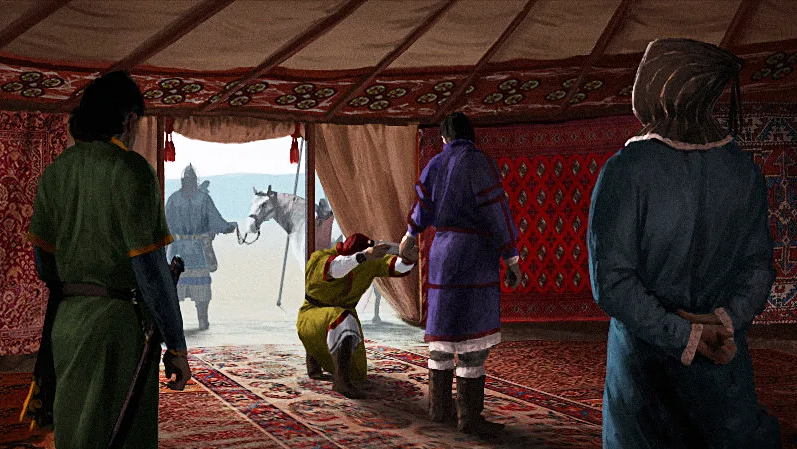The inhabitants of the Celestial Empire, in principle, understood that their neighbors on the other side of the Great Wall were multinational. But they did not understand the varieties of nomads, and called them a cluster of beidi — “northern barbarians”. But, from a certain point, interest in them became higher, when there was some realization that tribal strife could be used against enemies. After some study of the inhabitants of the steppe, it became clear that they were divided into the Tele (ancestors of the Turks), the Dunhu (ancestors of the Mongols), and the Hunnu, who are something in between but resemble neither.

When the Hunnu empire was strong, there was no way to take advantage of it in any way. But after its division into southern and northern parts, the Celestial Empire made an alliance with the Xianbi. The southerners were eventually conquered and incorporated into China, and the northerners were expelled by the Protomongols. True, and the Xianbi power was not in strength for long, and eventually became mired in internecine strife.
As a result, at the end of European antiquity and the beginning of the early Middle Ages in Mongolia again came troubled times. The only saving grace was that China was also fragmented at that time, divided into several ethnically Chinese and semi-barbarian kingdoms. Under such conditions, the ascent of the Zhuzhan began.
First of all, it is not a people or a tribe name. Originally, the Zhuzhans were freedom-loving nomads who left their plan to serve a charismatic leader, some successful ataman. Thus, this word is close to our concept of “druzhina”. And it is not an ethnic, but originally a social category. That does not exclude the predominantly ancient Mongolian origin of the political core of the Zhuzhans and versions that their ruling family came from among the Huns.
Mugulu was a legendary leader who acted after the collapse of the Xianbi Empire in the early 4th century. His origins are unknown, but as a young man he was enslaved and became a servant in one of the nomadic clans. He was then freed as the young man grew to be a strong warrior.
When he was sentenced to capital punishment for some offense, Mugulyu escaped to the steppe and in time gathered around him a band of brave men. Perhaps it is from his name comes the name “Mongols”. As you can see, a fairly standard fate for a steppe leader. His son had already acquired his own horde, which began to call themselves Zhuzhans. At that time they were still paying tribute to the Xianbi, but later challenged them.
A descendant of Mugulu named Yugiulu Shelun, who lived a century later, managed to unite all the Zhuzhans. He put the Hunnu military organization back into action, established a procedure for recruiting nomads into his service, and introduced strict rules of conduct and punishments for those who violated them.
Shelun conquered many Mongol and Turkic tribes, but lost in a confrontation with the Chinese state of Northern Wei, where the Toba people, a sideline of the Xianbi, ruled. The Jujani were forced to abandon the Ordos region, but expanded substantially westward toward the Silk Road. The Tele, the ancient Turks, submitted to them, and the Ephthalites in Central Asia were forced to pay tribute. The latter subsequently migrated towards Bactria and further south.
To break the continuity with the Hunnu, Shelun was the first to use the title Kagan — previously it was just a title of nobility. Since then, all nomads of the great steppe named their leaders exclusively Kagans or Khans — the second word is a derivative of the first.
Over time, the Zhuzhanis equaled in strength with the Northern Wei and became its equal partners. Many times their leaders married Chinese princesses of certain dynasties. In the Celestial Empire, this practice was considered deeply evil, but was sometimes used to pacify barbarians. In alliance with one or another royal family, nomads plundered the states that opposed them.
The Kagans actively resettled the Chinese in the steppe, and both peasants and city dwellers were accepted. Some urban life began within their domains, and from craft centers the pastoralists received the goods they lacked. Instead of a chief’s stake, they had a capital, the lost city of Mumocheng, probably located northwest of what is now the Chinese province of Gansu.

The barbarians even mastered Chinese writing — initially they used it in diplomatic relations, then began to keep internal records. There is information that at the beginning of the 6th century not only the aristocracy, but also some ordinary subjects were literate.
As early as in 460th Khaganate subjugated Ashin clan, which at that time lived in Turfan, area in modern Xinjiang region. They were relocated to Altai so that the new subjects would practice blacksmithing for their nomadic horde. In the mid-6th century, the Ashin chief became Bumyn, who secretly formed an alliance with the Western Wei, the successor state to the Northern Wei. But up to a time, he remained a loyal vassal, although he looked for an excuse to break with it.
It presented itself in 552, when the chieftain asked for the hand of the Zhuzhan princess. The Kagan wrote back that Bumyn was his servant and he should not have made such a proposal. As a result, the chieftain was enabled to act as the offended party, and attacked his suzerain with all his might. He was joined by all the tribes of Tele that were interested in overthrowing the foreign yoke. Thus the Turkic Khaganate was founded.
In 555 Turks have conquered native lands of Zhuzhan, all people, except for children till 16 years old, the winners have sent to the sky. According to the Chinese, some of them did escape to the north, and renamed themselves Datan (Tatars). Others apparently went west, and in Europe became known as Avars.

This is not a hundred percent true, but it coincides in time, and the Avar tribal elite had a very East Asian genetic profile, without the slightest admixture of nomads of the west. In addition, the Turkic Kaganate very principally persecuted the European Avars, called them its slaves and demanded from Byzantium their expulsion.
